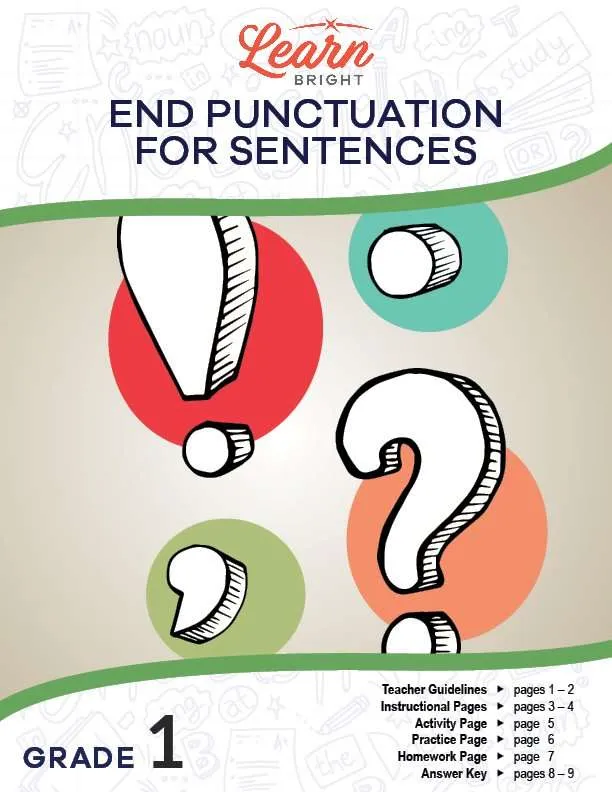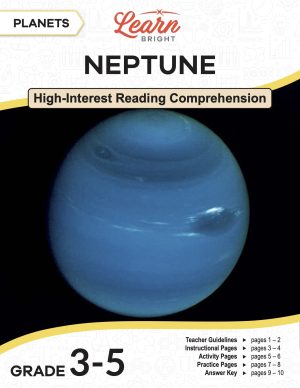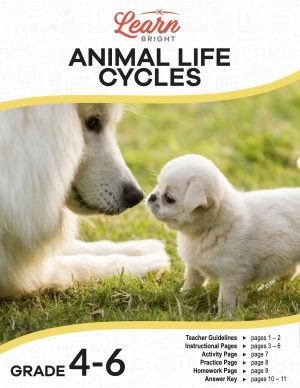Description
What our End Punctuation for Sentences lesson plan includes
Lesson Objectives and Overview: End Punctuation for Sentences lesson plan teaches students about what punctuation goes at the end of sentences and how punctuation can affect sentences. At the end of the lesson, students will be able to use end punctuation for sentences and identify the reasons for using end punctuation. This lesson is for students in 1st grade.
Classroom Procedure
Every lesson plan provides you with a classroom procedure page that outlines a step-by-step guide to follow. You do not have to follow the guide exactly. The guide helps you organize the lesson and details when to hand out worksheets. It also lists information in the orange box that you might find useful. You will find the lesson objectives, state standards, and number of class sessions the lesson should take to complete in this area. In addition, it describes the supplies you will need as well as what and how you need to prepare beforehand. The supplies you will need for this lesson are scissors, poster paper, colored pencils, and the handouts. To prepare for this lesson ahead of time, you can gather the supplies and copy the handouts.
Options for Lesson
Included with this lesson is an “Options for Lesson” section that lists a number of suggestions for activities to add to the lesson or substitutions for the ones already in the lesson. For the activity, one of the optional adjustments is to assign a punctuation mark to each student or group to use as a part of their picture with sample sentences. You could also have students write a paragraph or poem that uses each punctuation mark the same number of times. Another suggested addition to this lesson is to have students write acrostic poems using the names of each of the marks. Finally, you could have students write a short paragraph without any punctuation, read it aloud, and then have another students add punctuation and read it aloud again. They could then discuss how the punctuation changed the way they read the paragraph.
Teacher Notes
The teacher notes page includes a paragraph with additional guidelines and things to think about as you begin to plan your lesson. It notes that while students may be aware that sentences should end with punctuation, they may not always include punctuation in their own writing, especially on the internet. This page also includes lines that you can use to add your own notes as you’re preparing for this lesson.
END PUNCTUATION FOR SENTENCES LESSON PLAN CONTENT PAGES
Sentence-Ending Punctuation & Periods
The End Punctuation for Sentences lesson plan includes two content pages. The lesson begins by noting that all complete sentences in all of the stories that students read end with a punctuation mark. The three end punctuation marks are periods, question marks, and exclamation marks. Not all sentences are the same, and you should read different sentences in different ways.
End punctuation marks tell you that the sentences is over. They also tell you whether the sentence is a statement, question, or exclamation (which should be read with emotion). Each sentence is a complete thought. End punctuation marks also help prevent run-on sentences.
We use periods at the end of a complete sentence. These sentences are statements or commands. The lesson provides a few examples of sentences that end with periods. You should read sentences that end with periods with little emotion (but not like a robot). The way someone should read it also depends on the content of the sentence.
Question Marks & Exclamation Marks
We use question marks after a question and you use them when sentences seek information. You read a sentence that ends with a question mark differently than you would read a sentence that ends with a period. You should read them like a question, especially when reading aloud.
We use exclamation marks (also known as exclamation points) to show emotions like surprise or excitement, or for strong commands. You should read a sentence that ends with an exclamation mark with emotion, such as excitement, surprise, or even anger. You don’t read it in the same way as sentences that end with periods or question marks. However, there are some instances in which you can end a sentence with both a question mark and an exclamation mark. The lesson provides a few examples of this.
It’s important to use the correct end punctuation when writing. Understand the differences between the different punctuation marks is important to help you read sentences correctly and clearly. End punctuation also tells you when to pause while reading.
END PUNCTUATION FOR SENTENCES LESSON PLAN WORKSHEETS
The End Punctuation for Sentences lesson plan includes three worksheets: an activity worksheet, a practice worksheet, and a homework assignment. You can refer to the guide on the classroom procedure page to determine when to hand out each worksheet.
PUNCTUATION POSTER ACTIVITY WORKSHEET
To complete the activity, students will first cut out the three ending punctuation marks (a period, exclamation mark, and question mark). They will then glue them to a poster and use them as a part of a picture, adding some sentences that use the punctuation mark correctly. Finally, they will add a creative title to the poster.
Students may work either in pairs or groups for this activity if you’d prefer.
PUNCTUATION PRACTICE WORKSHEET
For the practice worksheet, students will complete three short exercises. First, they will fill in the blanks in a paragraph with words related to the lesson content and tell why each punctuation mark is used. Next, they will label the three ending punctuation marks. Finally, they will read sentences and add the correct punctuation mark to the end of each.
END PUNCTUATION FOR SENTENCES HOMEWORK ASSIGNMENT
The homework assignment asks students to first use a check mark to identify which sentences have the correct punctuation and an X for those that don’t. Next, they will rewrite the incorrect sentences with the proper punctuation. Finally, they will write two sentences using each of the ending punctuation marks.
Worksheet Answer Keys
This lesson plan includes answer keys for the practice worksheet and the homework assignment. There is no answer key for the activity worksheet because students’ answers will vary. If you choose to administer the lesson pages to your students via PDF, you will need to save a new file that omits these pages. Otherwise, you can simply print out the applicable pages and keep these as reference for yourself when grading assignments.









